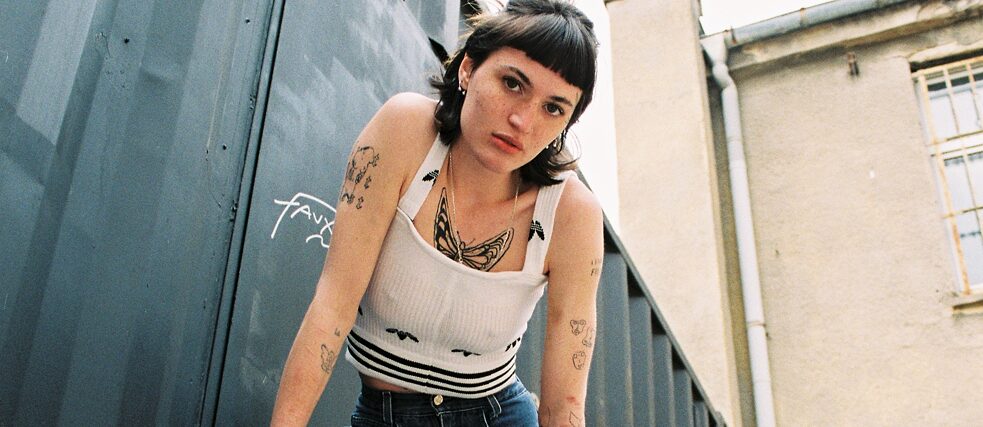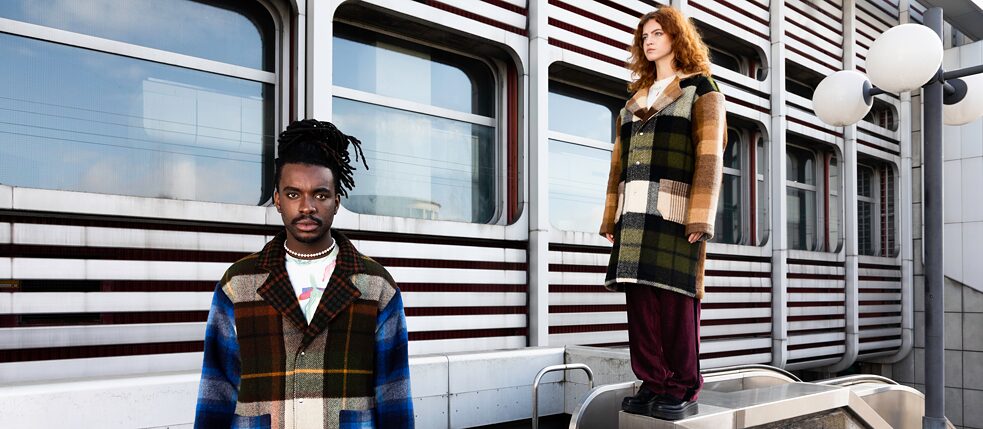Upcycling Fashion: New from Old

Louis Vuitton is showing luxury sneakers made from old trainers, Miu Miu gives Levi jeans a stylish upgrade, and Balenciaga is making shaggy coats out of shoelaces: the upcycling trend has hit the international catwalks. German designers are also opting for recyclable materials.
UTI EXI: Use the existing
“Uti existentium” is Latin for “Use the existing” and describes the mission of designer Maya Köndgen perfectly: she only uses materials that already exist, like curtains, tablecloths, tents, shower curtains and packaging materials. Fashion fans in the know can find reimagined second-hand pieces in the “Reworks” category, for instance the offbeat t-shirts with knot feature. The “Repurposes” heading includes shimmering trousers made from shower curtains or a romantic hoodie made from curtain lace. The UTI EXI label from Berlin has already been on show at pop-up fashion events in Paris and Munich, and made it to the final selection round at the Frankfurt Style Award 2020.
Daniel Kroh: an upcycling pioneer
A trained barber and fashion designer, Daniel Kroh is considered a pioneer of upcycling. He has been transforming workwear, such as painters’ overalls and boiler suits, into high-quality fashion, interior design and accessories since 2006. His designs are produced in Berlin and are 100% handmade. Signs of wear-and-tear – burn holes, paint flecks or patched rips – are retained, and they tell a story of the exciting former life of these unique pieces.
Jan’n June: irresistible animal protection
The products made by Jan’n June, a 15-strong team based in Hamburg, are sold on an international scale. They create fashion from fabrics made of existing resources, for instance recycled polyester. The “Handle-with-Care” collection features casual knits in recovered cashmere. It’s an important contribution to animal welfare – after all, animal protection organisations are increasingly highlighting the suffering of cashmere goats.
Wiederbelebt: minimalist feelgood fashion
Sarah Kürten, Oguzhan Deniz and their team use industrial surplus textiles from other companies to create timeless clothing with a minimalist Scandi style that combines well with other pieces and is durable. The studio in Stuttgart produces feelgood fashion with a conscience: the team processes all textiles fairly and sustainably. Since the label only uses surplus fabric, it achieves 100 per cent raw material savings and uses 90 per cent less energy and water than if the fabrics were produced new.
Moot: a patterned look for the brave
The designs by Nils Neubauer and Michael Pfeifer are “Made Out Of Trash”. The label sources discarded blankets from the Berliner Stadtmission or Rotes Kreuz and uses them to make T-shirts, jackets, trousers and accessories. The vibrant patterns on the long-sleeved tops and summer dresses are real statement pieces that require a certain sartorial boldness. But that boldness is worth it, because each purchase supports charity.
NONOI Studio: a tie without a collar
The Hamburg label NONOI (a play on words that means “not new”) produces limited-edition unique pieces made from second-hand garments, which are avant-garde yet at the same time wearable. Old clothes can be donated, whereby the team supporting the two founders Sophie Koop and Katharina Rybakov is careful to accept only natural materials such as silk, cotton, linen and cashmere. Belts, scrunchies and hair bands made from repurposed silk ties are particularly sought after.
The RAUM B initiative at the University of Oldenburg: smart consumer art
RAUM B, a project within the art, material culture and music study programmes at the University of Oldenburg, focuses on consumer behaviour using clothes – our “second skin” – as an example. For this project, students collect stories from wardrobes around the Republic and ask people about their oldest items of clothing or most legendary bad buys. Furthermore they offer alternatives: embroidering worn garments, providing complete outfits on loan, creating designs out of recycled materials, or obvious repairs of clothes – known as visible mending.
Bridge & Tunnel: 50 Shades of Blue
Constanze Klotz and Lotte Einhorn have their designs made up by socially disadvantaged people in the central Hamburg district of Wilhelmsburg. They use denim from waste textiles and material surplus. You can have your own favourite pair of jeans made into a new garment there. The result is a universe of recycled shades of blue, which appeals to the blue planet ethos.







